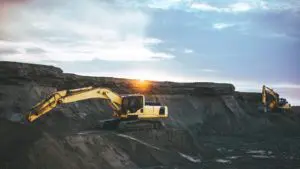Operational and Capital Cost Comparison: Zafranal Project vs. SHERPA Estimates
Accurate cost modeling is critical for project developers looking to align internal expectations with external funding realities. The Zafranal copper project in Peru—jointly owned by Teck Resources and Mitsubishi Materials—offers a valuable case study in comparing owner-generated estimates against independent benchmarks.
In this analysis, we compare capital and operating costs disclosed in company filings with estimates generated using Costmine’s SHERPA modeling software. SHERPA provides a transparent, data-driven framework that standardizes input assumptions, applies consistent costing logic, and draws from real-world data sourced from the Mining Cost Service. The result is an independent cost model that allows developers to test their assumptions, identify cost gaps, and improve planning confidence.
SHERPA’s Breakdown of Operating and Capital Costs
SHERPA’s model was built using the same throughput and production parameters disclosed in company filings, but with a more inclusive cost structure.
On the operating side, SHERPA returned an estimate of US$16.00 per tonne, compared to the company’s reported US$9.28 per tonne. The US$6.72 difference is largely driven by SHERPA’s systematic inclusion of indirect labor, detailed maintenance, site services, and overheads—categories that are often minimized or excluded in early-stage estimates.
On the capital side, SHERPA produced an estimate of US$1,188M, versus Zafranal’s reported US$1,019M. The difference reflects SHERPA’s allowances for owner’s costs, construction management, contractor mobilization, and contingencies—critical components that are frequently compressed in scoping-level cost studies.
Teck & Mitsubishi’s Reported Breakdown of Capital and Operating Costs
Zafranal’s cost estimates reflect internal assumptions around development strategy, risk allocation, and the use of existing regional infrastructure. With a reported capital cost of US$1,019M and operating cost of US$9.28 per tonne, the project appears to lean on tight scoping and streamlined estimates typical of feasibility-stage work.
These figures likely omit or underrepresent indirect costs and escalation risk—factors that can create significant variances during execution. Benchmarking against SHERPA highlights where optimistic assumptions may leave room for cost overruns and misaligned investor expectations.
Total Operating Cost Comparison (US$/t) Between SHERPA and Teck & Mitsubishi
SHERPA’s operating cost estimate of US$16.00/t is significantly higher than the US$9.28/t reported in company filings. This US$6.72 difference shows how narrower scoping and optimistic inputs can create blind spots in financial planning.
SHERPA’s broader modeling structure systematically includes categories that often get compressed—such as indirect labor, site services, and administrative overheads. These represent real expenditures that affect performance and should be considered early to avoid future surprises.
Total Capital Costs Comparison Between SHERPA and Teck & Mitsubishi
On the capital side, SHERPA’s estimate of US$1,188M is about US$99M higher than the company’s figure. While this gap is smaller than on the operating side, it still underscores the importance of capturing escalation, contingency, and indirect costs even at the feasibility stage.
The SHERPA model includes items like contractor mobilization, construction management, and owner’s costs—components that often surface during execution but are sometimes deferred in internal studies. For a remote project like Zafranal, these line items can materially impact final delivery.
Why Benchmark with SHERPA?
SHERPA allows developers to test internal estimates against a transparent, bottom-up model built from real-world cost inputs. For greenfield projects in challenging locations—like Zafranal—benchmarking with SHERPA helps surface potential gaps, improve cost certainty, and strengthen financial models.
In this case, SHERPA’s broader scope offers a more conservative—but realistic—view of the project’s economics. By validating Teck and Mitsubishi’s reported costs against an independent model, stakeholders can move forward with greater confidence.
Learn more about SHERPA here: SHERPA | Costmine Intelligence


























